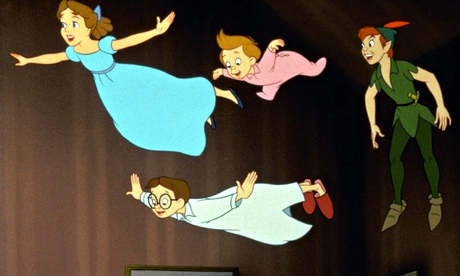
Dorothy, Tintin, the Swallows and Amazons, the Famous Five, Bart and Lisa Simpson – all are frozen in childhood, however many years the series featuring them cover (21, in the case of Enid Blyton's eternal tweenagers). But other children's authors anticipated JK Rowling – who this week offered a glimpse of a 33-year-old Harry Potter at the Quidditch world cup – by revisiting their characters after a break, usually as grownups.
Tom Brown at Oxford (1861)
Although Thomas Hughes had less success with this follow-up to Tom Brown's Schooldays, his hero also had an afterlife in George MacDonald Fraser's 70s historical romp Flashman's Lady, in which Tom is cricket-mad and the titular protagonist is his former rival at Rugby.
Jo's Boys (1886)
Louisa May Alcott wrote Little Women, Good Wives and Little Men between 1868 and 71, and added this sequel 15 years later, centred on Jo's sons and former pupils at the school she runs, now students or in their first jobs.
Tom Sawyer, Detective (1896)
Mark Twain couldn't resist awarding his colourless creation a third and fourth (in Tom Sawyer Abroad) outing – after his debut in 1876, and sidekick role eight years later in Huckleberry Finn – but showed no appetite for the irksome challenge of ageing him: Tom and Huck are still kids when they solve a murder and travel to Africa.
Peter and Wendy (1911)
Seven years after JM Barrie's play Peter Pan, his novel version incorporates "An Afterthought" in which Peter returns: he's still a boy, but Wendy is married with a daughter and so declines a trip to Neverland. He is not happy.
The Tale of Mr Tod (1912)
An early form of pester power compelled Beatrix Potter to revive Peter Rabbit as an adult, caught up in the kidnapping of his cousin Benjamin Bunny's children.
Anne of Windy Poplars (1936)
After restarting the Anne of Green Gables series with this novel after a 16-year gap, LM Montgomery took her orphan heroine on from her early 20s via marriage and motherhood to her 70s – a rare example (Adrian Mole is another) of a children's series continuing into middle age and beyond.
Heidi Grows Up (1938)
A spectacular 58 years after Johanna Spyri's 1880 novel Heidi, and 37 after Spyri's death, her translator Charles Tritten brought out this and another sequel, saying they were based on her writings. In them (spoiler alert) she marries Peter the goatherd and has twins.
Lord of the Rings (1954)
The most extraordinary of all sequels sees Bilbo Baggins, the hero of The Hobbit (1937), playing a semi-retired supporting role after enjoying 111th birthday celebrations with his cousin Frodo and handing over the Ring.
The Starlight Barking (1967)
In Dodie Smith's, er, eccentric follow-up to The Hundred and One Dalmatians, all humans, including Cruella de Vil, are in a deep sleep. Dogs such as the Dalmatians are summoned to a meeting in Trafalgar Square where Sirius, an extraterrestrial dog, invites them to leave nuclear war-threatened Earth with him.
Tales from Watership Down (1996)
After a 24-year hiatus, Richard Adams brought back the talking bunnies of his mega-selling Watership Down. They are much the same, but 90s girl power has had an impact: a female rises to the rank of joint-chief rabbit.

